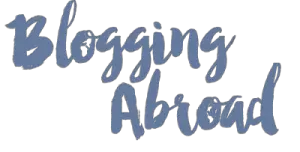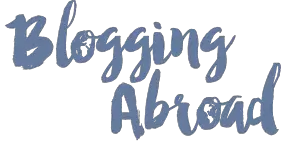
17 Jul Common Mistakes To Avoid On Your Blog’s About Page
As managers of a fantastic community of bloggers from around the world, we are regularly interacting with hundreds of different blogs. We’ve seen the good, the bad, the ugly, and the beautiful.
Since our aim is to better equip folks who are bridging cultures through blogging, we wanted to share a few simple tweaks that could improve the effectiveness and quality of your blog.
The About page
There are a few foundational elements that every blog needs in order to connect effectively with readers. The “About page” is one of these key elements.
An About page is one of the most important and most commonly viewed pages on almost any blog. It may go by different names (About Me, FAQs, etc.), but essentially, it introduces the readers to the blog and its author(s). Because so many readers visit the About page, bloggers should be very intentional about what is published there.
Think about it from a new reader’s perspective. What are they looking for? What do they need to know?
To help you answer these questions and create a more effective blog, we’ve put together this list of the most common mistakes we’ve seen on blog About pages.
Mistakes to avoid on your About page
-
-
Not having one
We were shocked to come across blogs that don’t have any About page at all. As a new reader, we immediately look for more information about the author and when we can’t find it, there’s a big disconnect. Most often, we won’t bother coming back.
Granted, some folks prefer to remain anonymous, and there are a few ways to do this. For example, you can use your initials or an alias instead of your full name. Giving general background info without being too specific still helps satiate the reader (You could say you’re a teacher from “the Northwest,” rather than naming the exact town you come from).
If you don’t want strangers reading your updates, most blogs can be made private or you can password-protect certain posts. Alternatively, you may want to consider sending your updates by e-mail so they’re not public on the web at all.
-
-
-
Oversharing contact info
Consider that just about anyone can find and access your online blog – from your taxi driver to the bots that want to send you spam. As we mentioned in the first point, there are ways to protect your personal information even if you have a very public blog.
For safety reasons, we recommend only giving out your physical address and e-mail to friends and family by using a more private forum. If new blog readers want to get in touch with you, try setting up a contact form on your site.
-
-
-
Out of date info
Perhaps the most common mistake people make with their About pages is they “set it and forget it.” It’s a bit confusing when an About page reads, “I’m going to Paris next month to study French!” but they’ve been blogging from France for the past year already.
If you wrote your About page when you first set up your blog, it’s time to check on it! Make sure the information is still accurate and, preferably, in present tense.
-
-
Omitting the big questions
A truly great About page will put the reader first. What do they want to know?
Usually there are just a few big questions that most readers want to know: Who are you? Where are you? What are you doing abroad? Why are you doing it? When and for how long?
It’s a good idea to include a current picture of yourself, especially if it’s an image that gives a sense of your daily life abroad, and perhaps a map (if you’re somewhere people may not be familiar with). You could even do a Frequently Asked Questions section based on the most common things friends, family, and strangers back home are curious about.
We hope this article has provided you some simple steps to refine your About page.




Sorry, the comment form is closed at this time.